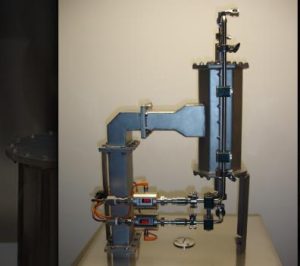What Are the Specifications of an Earth Station Antenna?
An Earth station antenna is a crucial component in satellite communications, designed to transmit and receive signals to and from satellites orbiting the Earth. These antennas are characterized by their specific technical specifications that determine their performance and suitability for various applications. Here, we detail the essential specifications of an Earth station antenna, highlighting their importance in ensuring effective communication.

Diameter and Size
The size of an Earth station antenna is one of its most critical specifications. Typically, these antennas range from 3 meters to over 30 meters in diameter. A common size for many applications is a 9-meter antenna. The large diameter is necessary to focus the signal beam tightly, ensuring it can travel the long distances to and from satellites with minimal loss.
Example
A 9.0-meter Earth station antenna provides a balance between performance and feasibility for installation, offering sufficient gain and directivity for both uplink and downlink operations.
Frequency Bands
Earth station antennas operate in various frequency bands, each suited to different applications. The most common frequency bands include C-band (4-8 GHz), Ku-band (12-18 GHz), and Ka-band (26.5-40 GHz). Each band has its advantages, such as the C-band's resistance to rain fade and the Ka-band's higher data throughput capabilities.
Bandwidth
The bandwidth of an Earth station antenna determines the range of frequencies it can effectively transmit and receive. Wide bandwidth capabilities allow for greater data transmission rates, which is essential for applications requiring high data throughput, such as broadband internet and high-definition broadcasting.
Gain and Efficiency
Antenna gain, measured in decibels (dB), is a critical specification indicating how well the antenna can direct radio waves in a specific direction. Higher gain values mean better performance in terms of signal strength and quality. Earth station antennas typically have gains ranging from 45 dB to over 60 dB, depending on the size and frequency band.
Efficiency
The efficiency of an Earth station antenna, often expressed as a percentage, indicates how effectively it converts input power into radio waves. High-efficiency antennas ensure that more of the transmitted power reaches the satellite, improving communication reliability and reducing power requirements.
Polarization
Polarization refers to the orientation of the electromagnetic waves emitted by the antenna. Earth station antennas can support various polarization schemes, including linear (horizontal and vertical) and circular (left-hand and right-hand). The ability to switch between different polarizations enhances the antenna's versatility and compatibility with different satellite systems.
Beamwidth and Side Lobe Levels
Beamwidth is the angular width of the main lobe of the antenna radiation pattern, typically measured at the half-power (-3 dB) points. Narrow beamwidths, often a few degrees or less, are preferred for Earth station antennas as they focus the signal more precisely, reducing interference and improving signal quality.
Side Lobe Levels
Side lobes are unwanted radiation patterns emitted by the antenna in directions other than the main lobe. Low side lobe levels are crucial to minimize interference with adjacent satellites and other communication systems. Specifications for side lobe levels typically require them to be at least 20-30 dB below the main lobe level.
Environmental Specifications
Earth station antennas must withstand various environmental conditions, including wind, rain, and temperature extremes. Specifications often include wind load ratings (e.g., operational at 125 km/h and survival at 200 km/h), temperature ranges (e.g., -40°C to +60°C), and resistance to corrosion and other environmental factors.
The earth station antenna is a sophisticated device with numerous specifications that ensure its performance, reliability, and suitability for satellite communications. Understanding these specifications helps in selecting the right antenna for specific applications, ensuring robust and efficient communication with satellites.